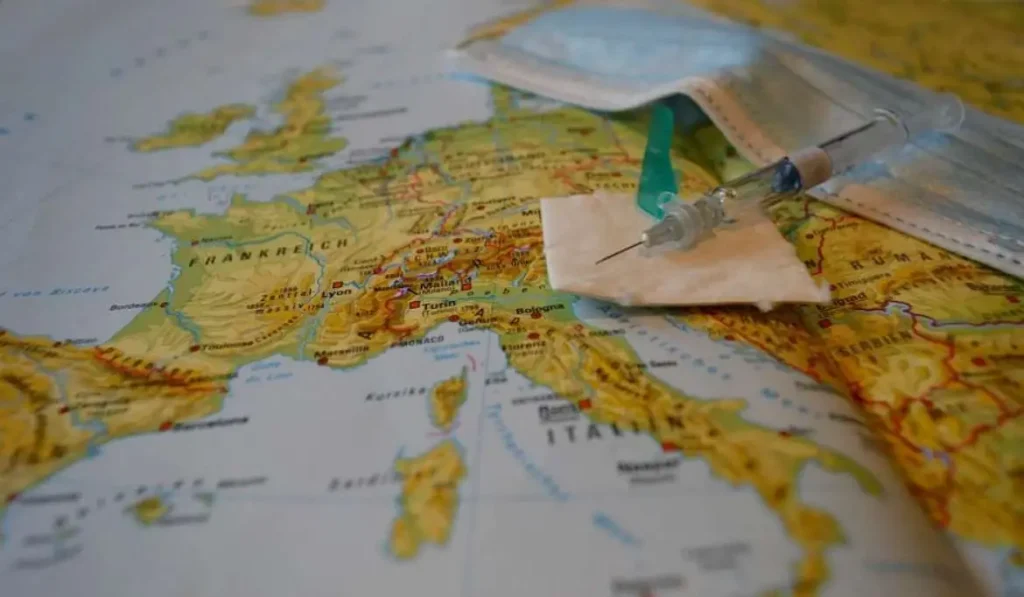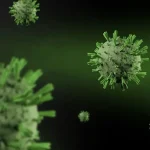As Poslovni Dnevnik writes, Alemka Markotic discussed how the novel coronavirus has succeeded in spread around the world in the past year, she also spoke about the epidemiological situation in Sisak-Moslavina County after the earthquake, how vaccination is proceeding, the various new virus strains and the current epidemiological measures in place.
Alemka Markotic pointed out that the number of new coronavirus patients is falling across Croatia and that this means a lot for patients who do unfortunately require medical care when they become infected because they can now be offered better care. She noted that the negative trend is also excellent for healthcare professionals who were previously under great pressure. She added that we’re still deep in the colder winter months and that this is the sort of weather which goes hand in hand with the spread of diseases which can be transmitted via droplets from sneezing, coughing and the like.
She stressed that there are many factors that affect the spread of the virus, but also that certain changes do normally occur in it as well. The population of certain areas and the age of people exposed to various infections are also important to take into account.
”On the other hand, we’re witnessing that while the situation is very difficult, no one is questioning the measures. As soon as it is seen that the situation is easing and the number of infected and the number of deaths is falling, both the measures and those who put the measures in place are immediately questioned. We’ve seen in other countries that have allowed themselves a little more relaxation that the situation has become bad again, with the penetration of the virus spreading rapidly,” she said.
”There are certain professions, activities, which are unfortunately more affected by this lockdown of sorts. Some of them managed to find an alternative to survive in some way, if nothing else, and sadly some failed to do that,” stated Alemka Markotic, adding that there is nothing that has no price that comes with it.
”It’s the same as when you take medicine, it will in most cases cure and protect you. But it can also have side effects, harmful effects, and even when you know that a particular drug has greater harmful effects, you’ll take it because it will save your life, and you agree to the part where that drug will cause some unpleasant consequences for you, which may be permanent,” she said.
When asked whether the whole of the month of February will continue to go on under anti-epidemic restrictions, Alemka Markotic said that the situation is constantly being monitored and the measures have not been set in stone. That the situation continues to be fluid.
”Everything that can be and tried to be gradually released, as was done back during that first wave, will surely be done in a similar way now. Only now we have an additional problem on our hands because there’s a lot more in place. The virus has spread around the world in this one single year. Secondly, as we create obstacles for it, it finds new ways to get to us, genetically, it finds ways to spread faster. It’s a game between us and the virus that is carrying on,” she said.
Croatia is not an island…
Speaking about the infection rate, Alemka Markotic said that Croatia was among the countries that didn’t insist on the so-called traffic light system. She also mentioned that Croatia is not an island and that it is important what the situation is in Austria, Bosnia and Herzegovina, Slovenia, Serbia and other countries.
”It’s also important what time of year it is, whether we’ll have tourists or not, whether we’ll go on trips or not, whether there are some holidays or festivities, whether there are any activities where people will be more mobile. It’s mobility that is very conducive to the spread of the virus. These are the times where sometimes you try to be better, sometimes you succeed, and sometimes you’re not 100% the best. There’s no one who has been perfect in this past year. You saw that Croatia was among the best in the world for a while, and then for a short time, we were among the absolute worst. Most other countries experience the same thing. Unfortunately, there are those countries which are constantly very poor and those who do more or less okay due to some demographic and social characteristics,” she explained.
Alemka Markotic understands that it is very difficult to live in uncertainty, and she emphasised that she is extremely optimistic that there is now a vaccine.
”It would be a shame to get the virus now, become seriously ill, and God forbid die, and the vaccine is already there, right at your fingertips. If this dynamic of vaccine delivery is fast enough, some kind of end to the pandemic can now be seen, which again depends on how many people will get the vaccination and how much they will accept it. On the other hand, we could just go ahead an promise that March the 1st will be the day when we lift all of the measures, and then situations happen that prevent that from happening and you just can’t fulfill that promise, I don’t know what the greater torment is. They’re both awful situations to live in – to wait and not see what the date will be, when you might be able to breathe a little and live easier. Or to have one promise and experience severe disappointment,” said Alemka Markotic.
She reiterated that a lot of people cannot tolerate the current situation in the long run, that everyone has had enough of everything, but that we simply have to find a way to endure it for now.
Earthquake-affected areas
She also spoke about the epidemiological situation in Sisak-Moslavina County after the earthquake and reminded everyone that after the earthquake in Zagreb in March, not many people came to the capital from all parts of Croatia, as is the case with Banovina, where people from abroad have been coming to deliver aid.
”In the area of Sisak-Moslavina County, even before the earthquake, the number of infected people began to grow sharply. Then the earthquake occurred. A lot of people with the best intentions are coming to visit the area and are coming from all parts of Croatia on their own initiative to help. I think we’ll see the consequences of that in the long run. But then again, the situation is different because we have the vaccine and rapid antigen tests, which we didn’t have at the time of the first earthquake in Zagreb last spring. I’m not so pessimistic about the situation, but I believe that some increased numbers could be seen there, as well as the spread of the virus in other environments from which people came,” she pointed out.
How can we actually achieve collective immunity against the novel coronavirus? When asked whether collective immunity is a myth or a reality, Alemka Markotic said that it isn’t a myth, but that the question is with what and how it can be achieved.
She mentioned the example of measles and said that it was also a droplet disease “which can be transmitted in a similar way as the novel coronavirus”.
”For centuries now, a lot of people got sick and died until a vaccine came along. When collective immunity was achieved with the vaccine, only then were we able to curb measles. Influenza is transmitted in a similar way, but here we have a situation where the virus is changing. Its genome is composed of several parts, and such viruses are subject to more frequent changes. It changes and collective immunity is never achieved and won’t ever be achieved by a lot of people contracting and then recovering from the flu. That’s why we have vaccines and we monitor the virus and its changes so that we manage to produce a very adequate vaccine every time it changes. Where vaccination rates are high, we have an excellent level of protection. With the novel coronavirus, there are now two questions – how many people will be willing to get vaccinated, as we’ve seen it affects all groups of people, as well as the most fragile are the elderly with additional chronic diseases. Another thing is how its changes and its genome will affect those vaccines. Mutant strains of the virus have been recorded in Ireland, the United Kingdom, several in Greece, about 30 in France and Italy, and in Croatia we haven’t yet confirmed its existence. Its spread is influenced by the mobility of people,” Alemka Markotic pointed out.
For the latest travel info, bookmark our main travel info article, which is updated daily.
Read the Croatian Travel Update in your language – now available in 24 languages.
Join the Total Croatia Travel INFO Viber community.











